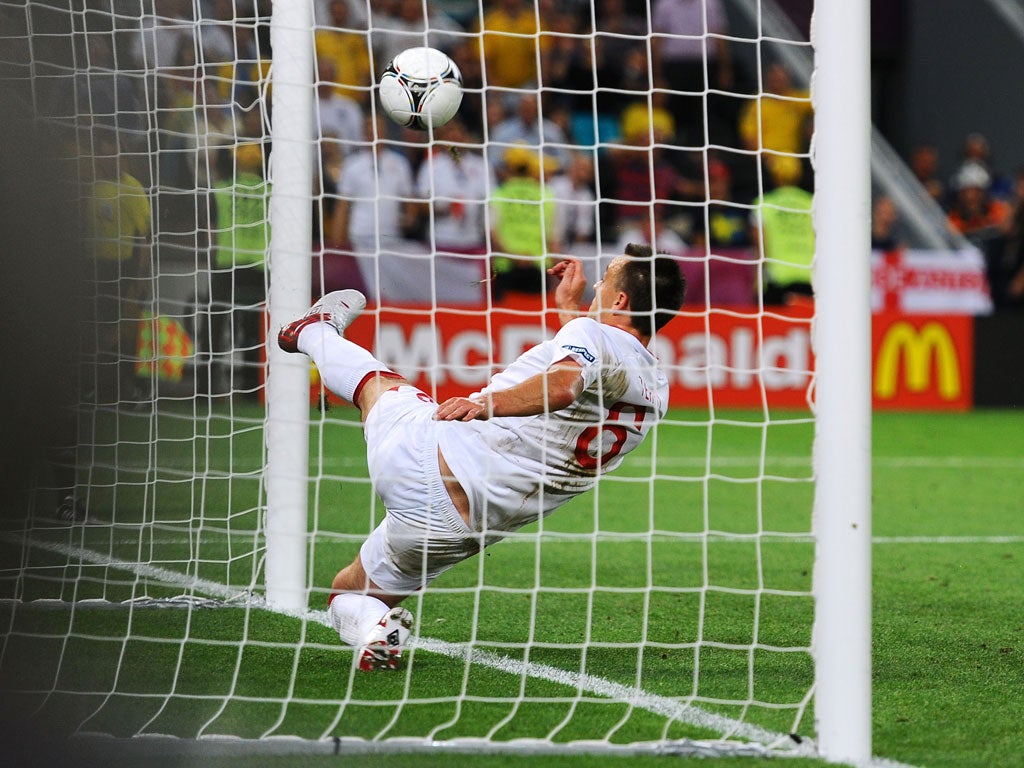
Your support helps us to tell the story
From reproductive rights to climate change to Big Tech, The Independent is on the ground when the story is developing. Whether it's investigating the financials of Elon Musk's pro-Trump PAC or producing our latest documentary, 'The A Word', which shines a light on the American women fighting for reproductive rights, we know how important it is to parse out the facts from the messaging.
At such a critical moment in US history, we need reporters on the ground. Your donation allows us to keep sending journalists to speak to both sides of the story.
The Independent is trusted by Americans across the entire political spectrum. And unlike many other quality news outlets, we choose not to lock Americans out of our reporting and analysis with paywalls. We believe quality journalism should be available to everyone, paid for by those who can afford it.
Your support makes all the difference.Goal-line technology is certain to get the go-ahead from football's law-makers next week, according to sources on the International FA Board (IFAB).
The two systems, Hawk-Eye and GoalRef, are set to be judged to have passed exhaustive scientific tests to the satisfaction of the IFAB.
The urgency to address the situation, given fresh impetus by Ukraine's disallowed goal against England last week, will also sweep aside any lingering doubts over the two systems.
Although the tests still raised questions over whether the systems would be completely 100% accurate in every circumstance, the results are understood to be positive enough even for the doubters on the IFAB to give the green light.
IFAB will stress however that the systems will be approved as an aid to referees rather than the ultimate decision-maker - the referee will still make the final call if he or she has any doubts.
The goal-line incident last week was a serious blow to the one remaining leading opponent of goal-line technology, UEFA president Michel Platini, who has been promoting a rival scheme of an extra official standing behind each dead-ball line. Platini said it would be an "historical mistake" if technology was introduced.
In the Ukraine-England incident, John Terry hooked the ball back into play when it was already across the line - no goal was awarded despite the extra official being no more than 10 yards away and staring straight along the line.
The incident fell perfectly into the lap of FIFA president Sepp Blatter, who is now a strong backer of goal-line technology and who opposes the extra two officials on the grounds that in many countries there are not a sufficient number of referees.
The IFAB will also consider whether the UEFA experiment with extra officials has been a success.
The law-making body is made up of FIFA, who have four votes, and the four home nations, who have one vote each. Any law change needs at least six votes.
A summary of results of the tests on the technology carried out by the EMPA - the Swiss Federal Laboratory for Materials Science and Technology - was discussed by IFAB members at a meeting earlier this month.
The Hawk-Eye system - developed by a British company now owned by Sony - is based on cameras and GoalRef - a Danish-German development - uses magnetic fields.
Each system is required to send an immediate message to a watch worn by the referee when the ball crosses the line.
The tests by EMPA were comprehensive, and included exposing the equipment and watches to extreme heat and cold, as well as humidity and heavy rain. Experiments also took place during live matches including England's match against Belgium on June 2.
Both systems are expected to be approved by the IFAB - as FIFA would open themselves up to accusations of favouritism if only Hawk-Eye were given the go-ahead, given that Sony are major FIFA sponsors.
It is still likely to be many months before any system is up and working - the systems will have to be licensed and installed in stadiums, and then certified that they are working.
FIFA's Club World Cup in Japan in December is likely to be the first competition where the technology is used.
PA
Join our commenting forum
Join thought-provoking conversations, follow other Independent readers and see their replies
Comments